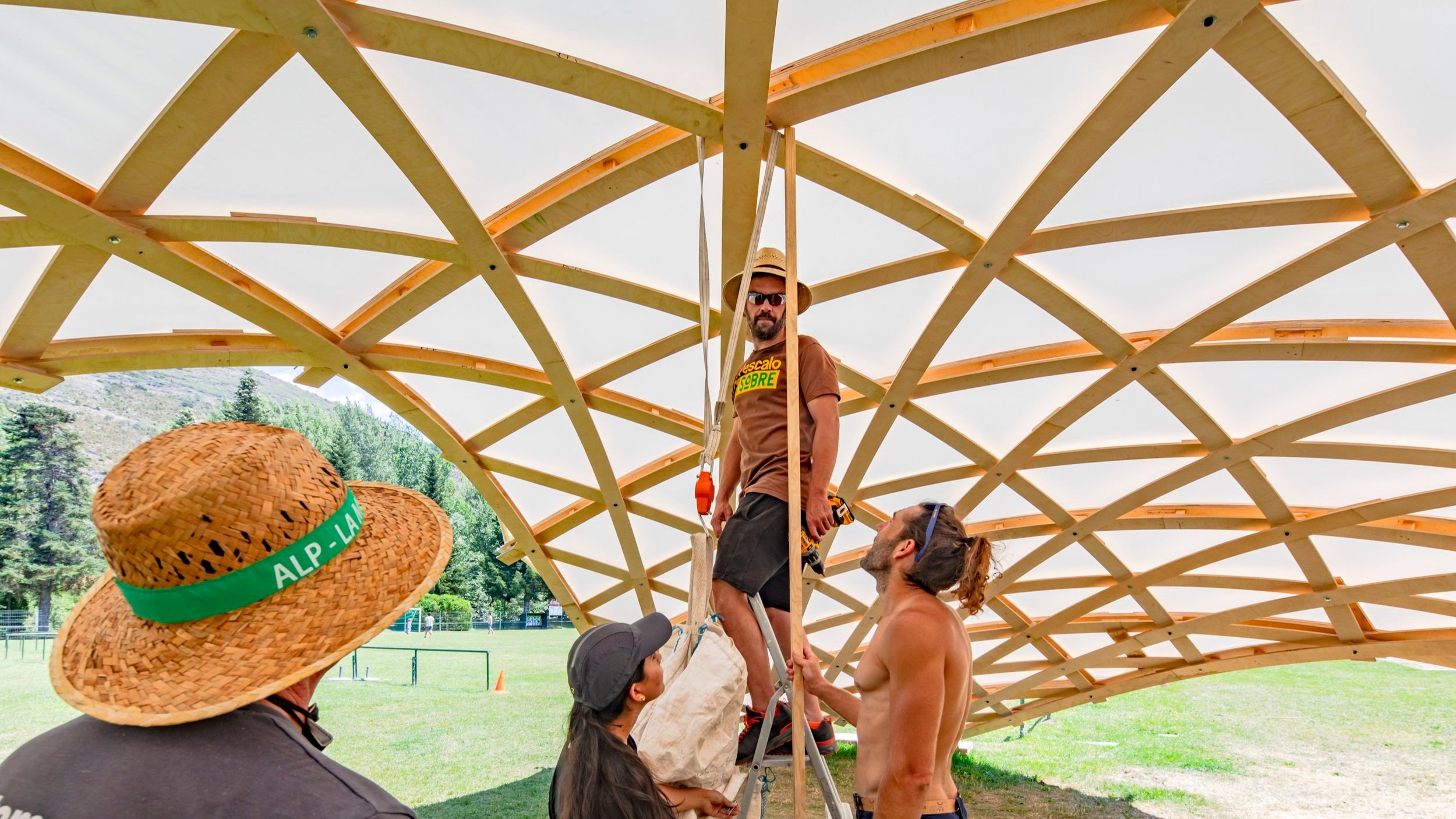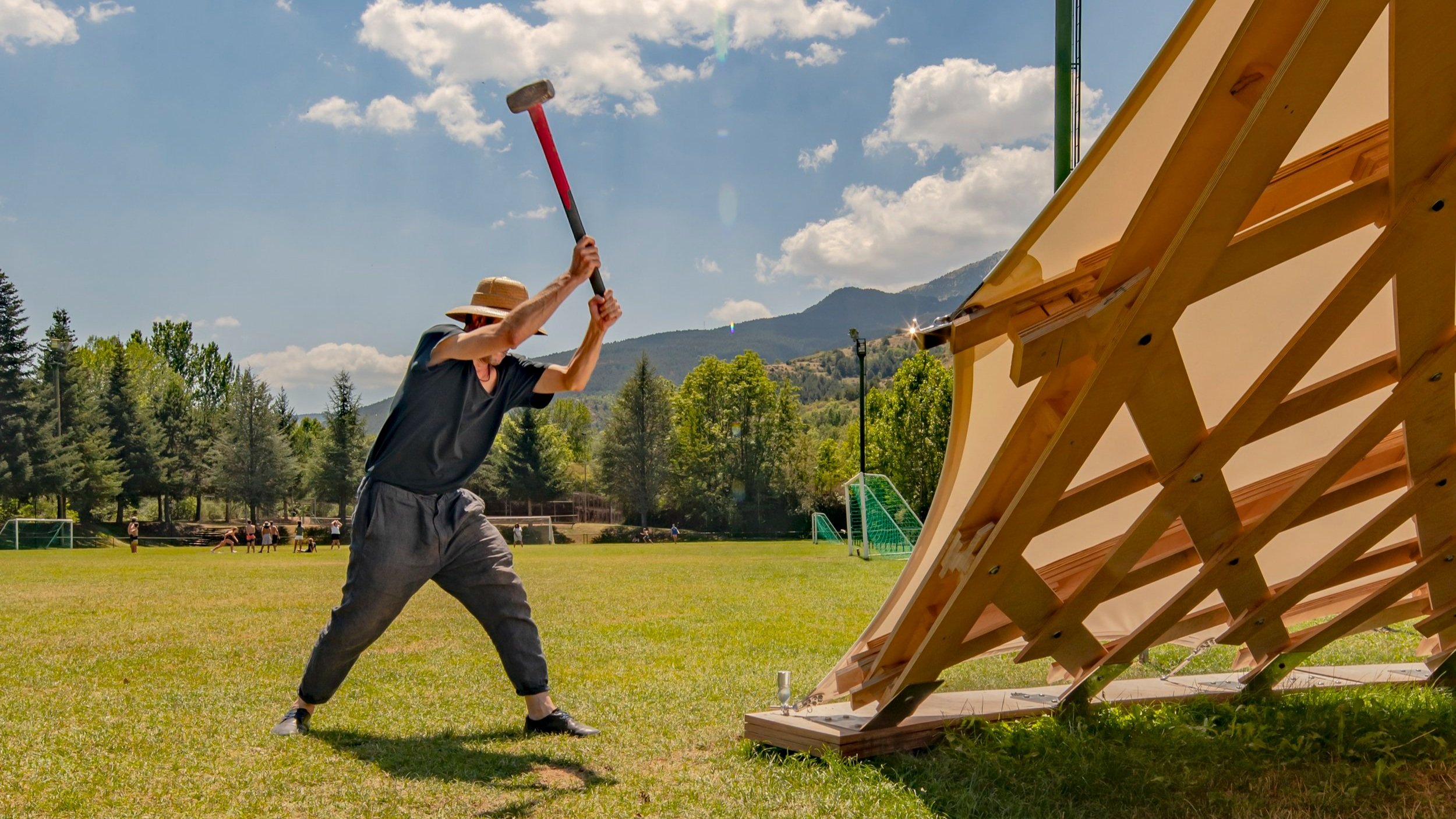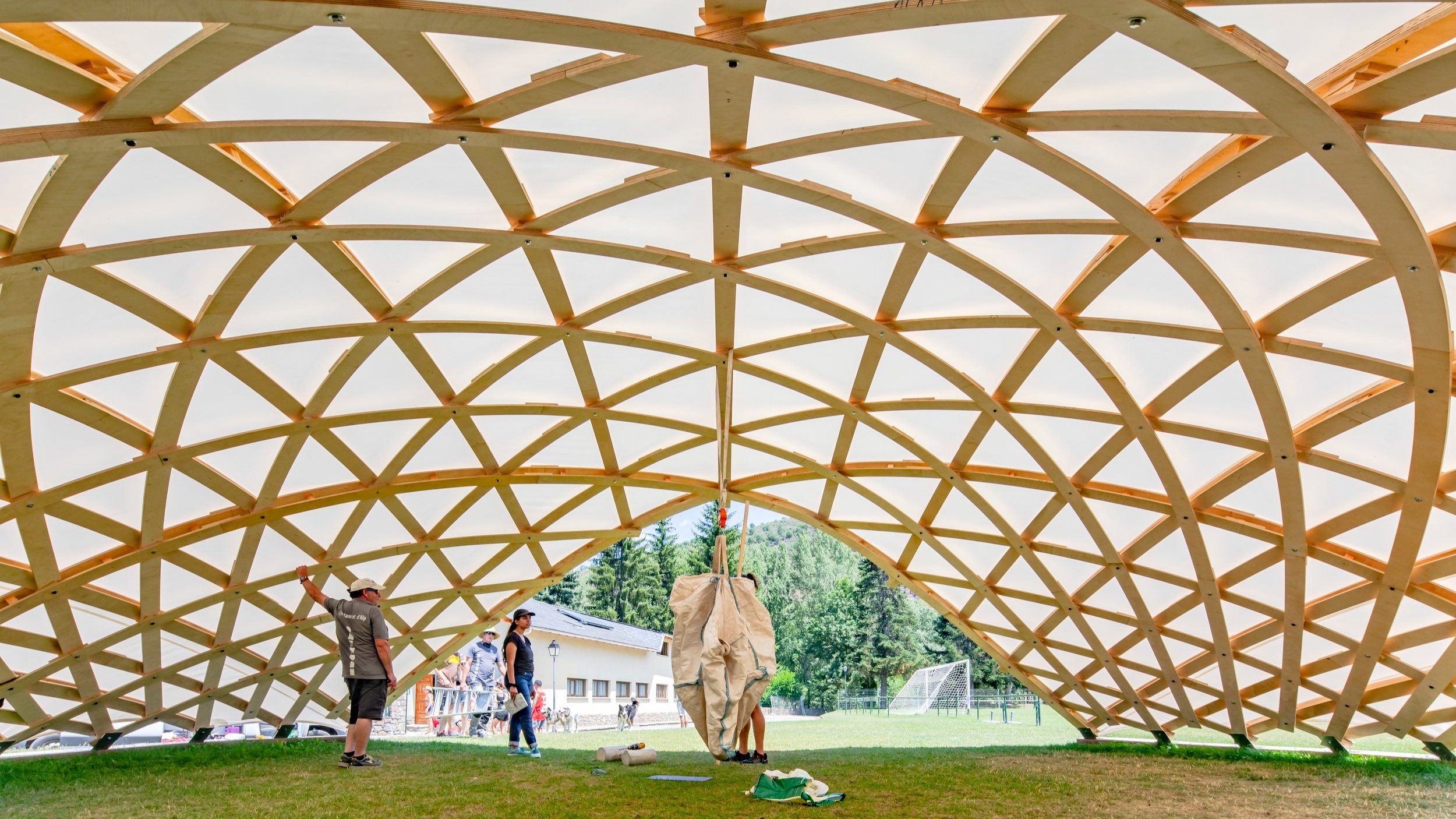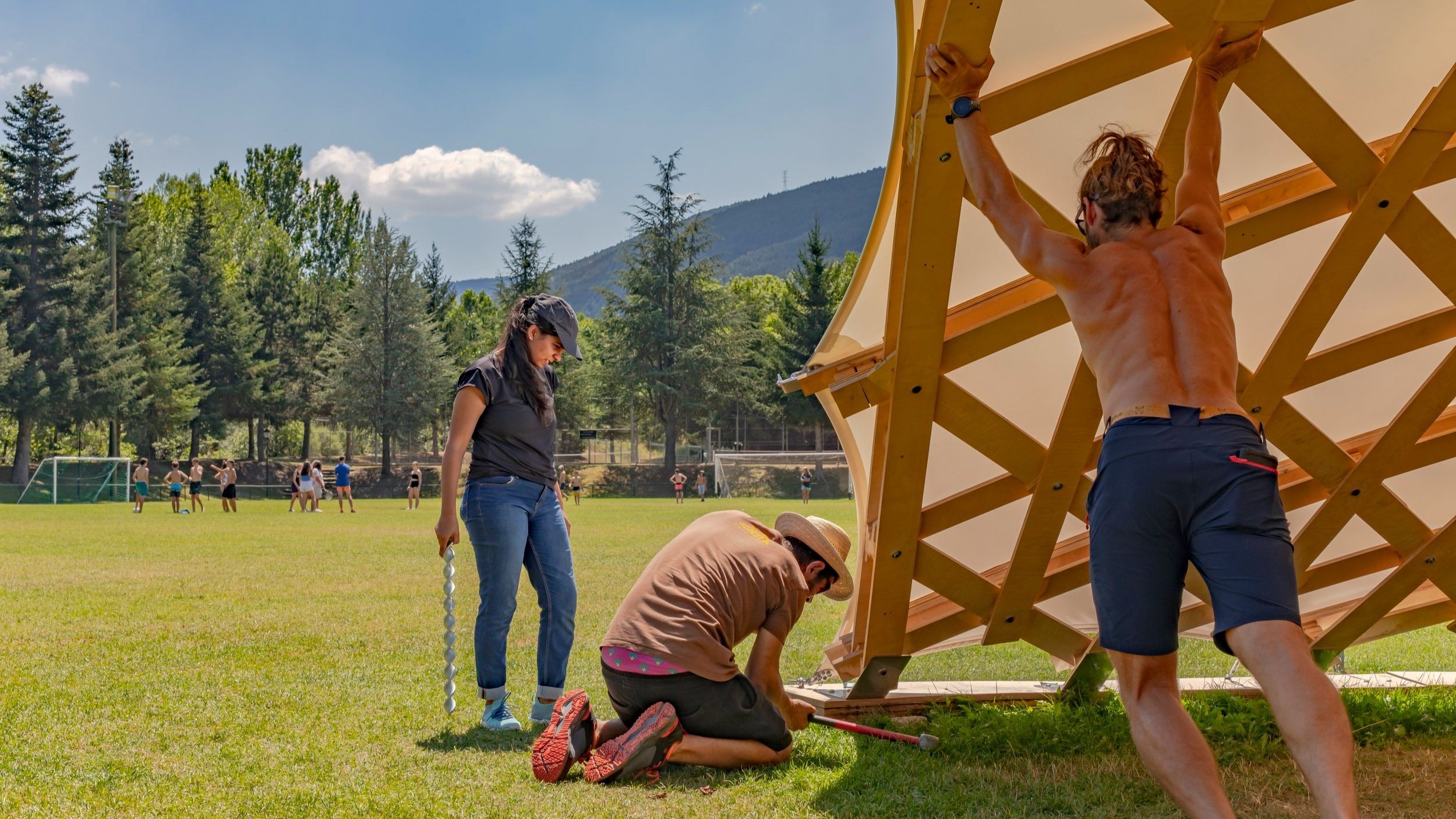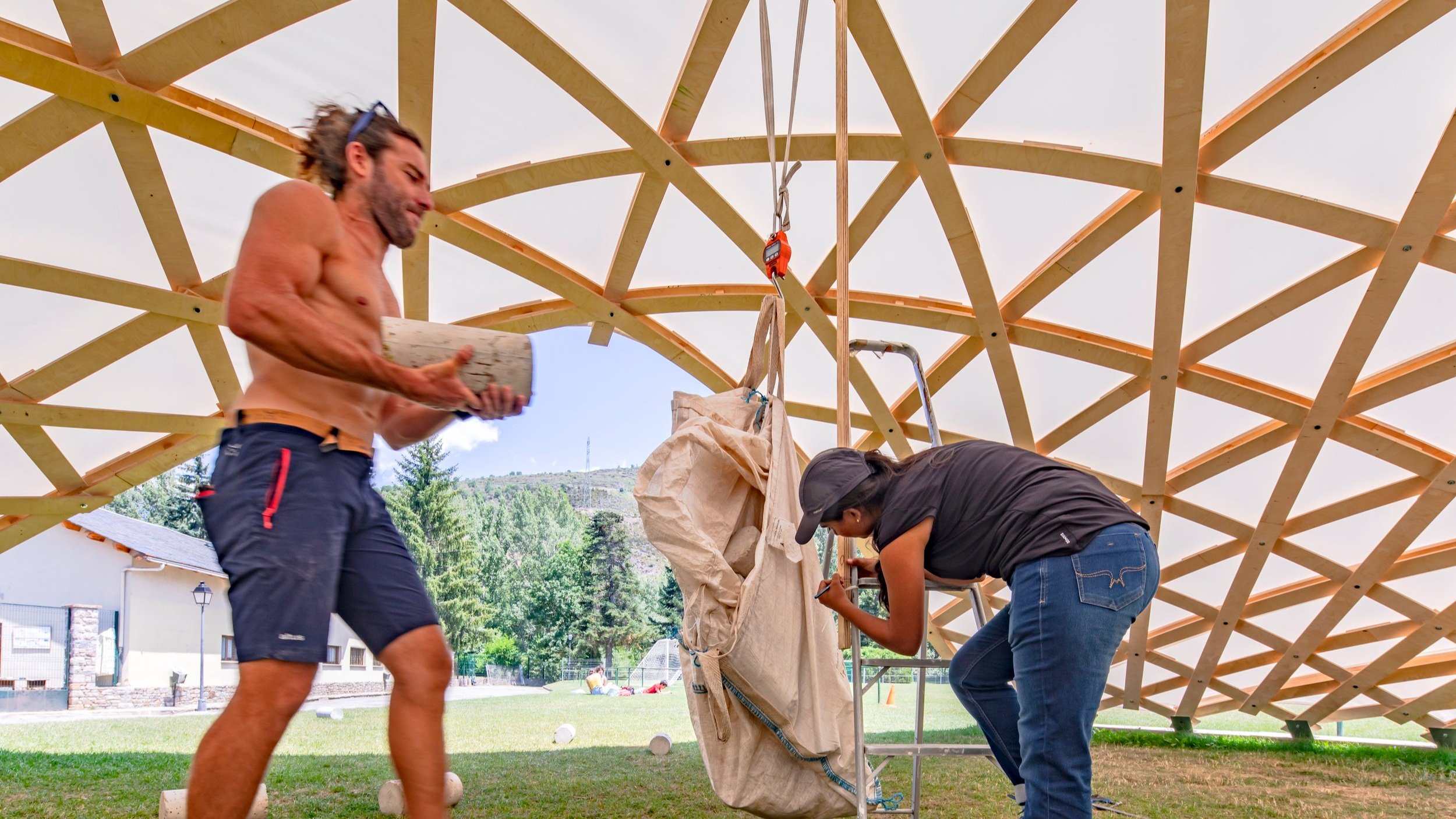In this paper, a complete process from design to construction is presented, aiming for a real scale gridshell, using wood (more specifically plywood), with the design generation being analyzed throughout the different stages. The type of gridshell examined is composed of linear elements (planks) laying on a network of 3 directional pseudo geodesic curves that belong to the surface and the final result is a structurally efficient, lightweight elastic gridshell. Taking under consideration the on-site experiences, the difficulties occurred through the construction phase, the decisions and theartifacts that accelerated the procedure, an evaluation and a critical overview of the steps followed, as well as their efficiency, is approached. In the frame of this case study, research is carried out for optimisation of the construction process in terms of time needed and facilitating its assembly, with the best possible use of auxiliary means. Lastly, the results of different approaches, including the realized one, are compared and evaluated giving an insight on the best performance along the sequence of assembly.
Keywords: 3 directional geodesic gridshell, geodesic gridshell, bending-active, optimization, construction process, optimized assembly, auxiliary means, parametric optimisation
Technical process



















